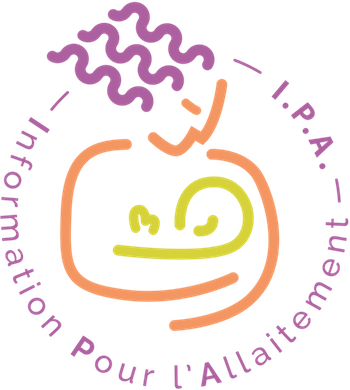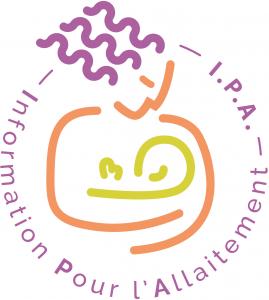Catégories
 > Physiologie > Lactation > Physiologie > Lactation
LactationVoir aussi
|
Documents disponibles dans cette catégorie (189)
Bulletin : texte imprimé
Les Dossiers de l'Allaitement, n°154 - Janvier 2020
La Leche league France, Auteur | 2020SOMMAIRE Cas cliniques p.1 Allaitement du bébé souffrant de diabète de type 1 p.1 Absence de transmission du virus Zika chez un enfant allaité p.3 Traitement d’un psoriasis chez une femme pendant la grossesse et l’allaitement p.4 Le dossi[...]Bulletin : texte imprimé
Les Dossiers de l'Allaitement, n°155 - Février 2020
La Leche league France, Auteur | 2020SOMMAIRE Cas cliniques p.1 Troubles musculo-squelettiques à l’origine de problèmes d’allaitement douloureux p.1 Suspicion de sévère entérocolite induite par les protéines du lait de vache excrétées dans le lait maternel 2 Tissu mammaire a[...]Bulletin : texte imprimé
Les Dossiers de l'Allaitement, n°156 - Mars 2020
La Leche league France, Auteur | 2020SOMMAIRE : Cas cliniques 1 Lactation induite et allaitement partagé dans un couple de femmes 1 Gérer l’allaitement chez les femmes qui présentent un cancer du sein 2 Allergie aux protéines du lait de vache du produit d’enrichissement du la[...]Bulletin : texte imprimé
Hot Milk, n°7 - Printemps 2017
2017Bulletin : texte imprimé
Hot Milk, n°11 - Printemps 2018
2018Bulletin : texte imprimé
Les Dossiers de l'Allaitement, n°157 - Avril 2020
La Leche league France, Auteur | 2020SOMMAIRE : Cas cliniques 1 Allaitement par une mère ayant des antécédents de maladie de Basedow 1 Allaitement avant et après une lésion médullaire ayant induit une tétraplégie 2 Candidose mammaire 3 Traitement d’une fistule lactée avec pr[...]Bulletin : texte imprimé
Les Dossiers de l'Allaitement, n°158 - Mai 2020
La Leche league France, Auteur | 2020SOMMAIRE : Cas cliniques Problèmes de déglutition chez les bébés allaités Traitement d’une sinusite avec du lait humain chez une patiente souffrant d’un lymphome Le dossier du mois Lait humain et chrononutrition : implication pour la s[...]Article : texte imprimé
Helene M Johnson, Auteur ; Anne R. Eglash, Auteur ; Katrina B. Mitchell, Auteur ; Kathy Leeper, Auteur ; Christina M. Smillie, Auteur ; Lindsay Moore-Ostby, Auteur ; Nadine Manson, Auteur ; Liliana Simon, Auteur |The aim of this protocol is to review the diagnosis of hyperlactation and describe management recommendations. Throughout this protocol, the quality of evidence based on the Oxford Centre for Evidence-Based Medicine 2011 Levels of Evidence (Leve[...]Article : texte imprimé
Rita Lynne Ferri, Auteur ; Casey Rosen-Carole, Auteur ; Jason Jackson, Auteur ; Katherine Blumoff Greenoberg, Auteur ; Casey Rosen-Carole ; Elizabeth Carreno-Rijo, Auteur |Children raised by LGBTQ+ parents are well adjusted and healthy, and in such families children thrive.5 Despite this, people who are transgender and/or whose sexual orientation is not heterosexual frequently experience misunderstanding and stigm[...]Article : texte imprimé
Wendy Brodribb, Auteur |Before the use of a galactogogue, a lactation expert should thoroughly evaluate the entire feeding process and maximize nongalactogogue management. In the absence of evidence for low milk supply, the mother should be reassured. When intervention[...]Article : texte imprimé
texte imprimé
texte imprimé
Cette publication fait le point sur les informations scientifiques concernant le développement physiologique au cours de la période prénatale et de la première année et ses implications sur l'alimentation infantile. Elle insiste sur les modes d[...]Article : texte imprimé
texte imprimé
Des femmes ayant été allaitantes ont été interrogées sur les motifs du sevrage. Il s'agit du sevrage de l'enfant, du sevrage de la mère, et du sevrage de la dyade mère-enfant (57 dyades étudiées). En effet, la dyade mère-enfant constitue une uni[...]texte imprimé
Comité pour la promotion de l'allaitement maternel, Auteur | Montréal [Canada] : Hôpital Sainte-Justine | Parents | 1999Le lait maternel est le meilleur aliment pour le bébé. Il permet, de plus, d?établir une relation privilégiée avec lui. Ce livre a pour objectif de répondre à toutes les questions que se posent les mères. Il fournit aussi de très nombreuses indi[...]Article : texte imprimé
texte imprimé
Au cours de ce travail nous avons rappelé dans une première partie la physiopathologie de la lactation et les caractéristiques du lait de femme par rapport au lait de vache, et présenté dans une deuxième partie les résultats d'une enquête réalis[...]texte imprimé
"Pourquoi choisir d’allaiter ? Comment cela fonctionne ? Quelles sont les bonnes positions ? Comment prévenir les difficultés ? Comment savoir que le bébé tète efficacement ? Quand et comment sevrer le bébé ? Comment gérer la reprise du travail [...]texte imprimé
Isabelle Battu-Merle, Auteur ; Agnès Jan-Mouchard, Auteur | Grenoble : Université de Grenoble | 2000Préparation et déclenchement de la lactation, bénéfices de l'allaitement maternel, prise en charge de l'allaitement maternel chez la mère et son enfant par le médecin généraliste, pathologies de l'enfant et l'allaitement, pathologies incurrentes[...]texte imprimé
"Ce précis de pratique clinique a été conçu pour assurer le soutien des professionnels qui accompagnent les familles souhaitant allaiter leur enfant. Le groupe d'auteurs (pédiatre, gynécologue, nutritionniste, pharmacien, puéricultrices, sages-f[...]Article : texte imprimé
texte imprimé
Considéré depuis deux générations comme une pratique démodée, l'allaitement a perdu sa juste place dans la vie des nouveau-nés. " Il est temps de réapprendre les bases de cette fonction pourtant si naturelle, de les expliquer clairement, afin de[...]texte imprimé
Lesptitesmainsdabord, Auteur ; Maman Lune, Auteur ; Axelle Camus, Auteur | Lesptitesmainsdabord | 2018"Suite à leurs allaitements, leurs recherches et leurs lectures, les auteures des blogs Lesptitesmainsdabord et Maman Lune ont réuni leurs écrits dans ce livre. Avec la participation de Axelle Camus, chiropracteur et maman allaitante. Un[...]texte imprimé
"Allaiter ou donner le biberon ? Toute femme enceinte est confrontée à ce choix. Évident pour certaines, il est compliqué pour d’autres d’autant que les idées reçues sont légion : lait maternel pas assez nourrissant, pratique douloureuse, sevrag[...]Article : texte imprimé
Beatriz Flores-Antón, Auteur ; Nadia Raquel García-Lara, Auteur ; Carmen Rosa Pallás-Alonso, Auteur |Inducing lactation in the absence of pregnancy (nonpuerperal lactation) is not always successful and, in many cases, only partial breastfeeding is achieved. Different protocols have been described, but scientific evidence and research are lackin[...]Article : texte imprimé
Kathleen A. Marinelli, Auteur ; Helen L. Ball, Auteur ; James McKenna, Auteur ; Peter S. Blair, Auteur |Breastfeeding and the place of sleep for the mother and the infant have been controversial internationally due to reported concerns regarding infant deaths despite the known benefits of exclusive and prolonged breastfeeding, which are increased [...]Article : texte imprimé
Feng Zhang, Auteur ; Haiou Xia, Auteur ; Meiyun Shen, Auteur |"Background: Suction pressure has been reported to be a key driving force of lactation. An infant's sucking at its mother's breasts is the major stimulus to post-natal prolactin (PRL) secretion, and PRL is the essential hormone for lactation and[...]Article : texte imprimé
Feng Zhang, Auteur ; Haiou Xia, Auteur ; Meiyun Shen, Auteur |Background: Suction pressure has been reported to be a key driving force of lactation. An infant's sucking at its mother's breasts is the major stimulus to post-natal prolactin (PRL) secretion, and PRL is the essential hormone for lactation and [...]Article : texte imprimé
Zelalem T. Haile, Auteur ; Bhakti Bhaoo Chavan, Auteur ; Asli K. Teweldeberhan, Auteur |Background: In the United States, a high percentage of pregnant women gain weight outside of the current Institute of Medicine's (IOM) gestational weight gain (GWG) recommendations. There is limited research examining the relationship between GW[...]Article : texte imprimé
Rebecca M Cantu, Auteur ; Marie S. Gowen, Auteur ; Xinyu Tang, Auteur |Background: Breast milk is considered the normative nutrition for human infants, and exclusive breastfeeding for the first 6 months of life is recommended by several national and global societies. Female physicians are a high-risk group for earl[...]texte imprimé
Micheline Beaudry, Auteur ; Sylvie Chiasson, Auteur ; Julie Lauzière, Auteur | Presses de l'Université du Québec | 2006A la fin des années 1960, l?allaitement maternel semblait menacé de disparition dans les sociétés industrialisées. Aux cours des décennies subséquentes, la recrudescence de cette pratique et l?intensification de la recherche sur de nombreux aspe[...]document électronique
Site sur la glande mammaire. Chapitre sur la biologie de la lactation.Article : texte imprimé
DB Cox, Auteur ; RA Owens, Auteur ; Pe Hartmann, Auteur |In women, the concentration of prolactin in the plasma increases in response to nipple stimulation. This response has led to the assumption that prolactin influences the rate of milk synthesis. To investigate this hypothesis we have measured 24 [...]Article : texte imprimé
A Prentice, Auteur ; GR Goldberg, Auteur |Data from the world literature have been analysed in order to test whether low body mass index (BMI: kg/m2) is a useful indicator of functional impairment of lactation performance. Forty-one databases containing 1726 measurements have been ident[...]texte imprimé
OMS, Auteur ; Randa J. Saadeh, Auteur | 1993This document provides an overview of the technical background, recommendations and, whenever possible, the cost implications concerning the following topics : health care practices related to breast-feeding; lactation management; direct-to-moth[...]Article : texte imprimé
DB Cox, Auteur ; JC Kent, Auteur ; Pe Hartmann ; RA Owens, Auteur |Breast volume and morphology of eight subjects were measured before conception and at intervals throughout pregnancy until 1 month of lactation. Breast volume before conception ranged from 293 to 964 ml. At the end of pregnancy the volume of bre[...]Article : texte imprimé
JC Kent, Auteur ; L Mitoulas, Auteur ; Pe Hartmann, Auteur |Quantitative measurements were made of relative breast volume and milk production from 1 month of lactation until 3 months after weaning, and the storage capacity of the breasts was calculated. The increase in breast tissue volume from before co[...]texte imprimé
Breastfeeding and Human Lactation, Second Edition is the most current and complete examination of breastfeeding and human lactation on the market today. Recognized as the authority on this subject, the second edition provides the comprehensive r[...]texte imprimé
Each new print copy includes Navigate 2 Preferred Access that unlocks a comprehensive and interactive eBook and Navigate 2 TestPrep. Breastfeeding and Human Lactation, Enhanced Fifth Edition continues as the leading reference for the latest clin[...]Article : texte imprimé
A significant body of research has looked at the issues of lactation failure. Outcomes include failure of the mother to reach her intended breastfeeding goals as well as complete lactation failure. Studies have reported the views of physicians, [...]texte imprimé
"Description The most authoritative, trusted guide to breastfeeding for the medical profession Key Features : Stay informed on every aspect of breastfeeding, from basic data on the anatomical, physiological, biochemical, nutritional, immun[...]texte imprimé
"Breastfeeding: New Anthropological Approaches unites sociocultural, biological, and archaeological anthropological scholarship to spark new conversations and research about breastfeeding. While breastfeeding has become the subject of intense de[...]Article : texte imprimé
Roghayeh Javan, Auteur ; Behjat Javadi, Auteur ; Zohre Feyzabadi, Auteur |Introduction: The beneficial effects of breastfeeding for the infant and mother are well recognized. Many natural products are reputed to be galactogogue agents in major Traditional Persian Medicine (TPM) textbooks. The aim of this study is to r[...]Article : texte imprimé
Ellen M Chetwynd, Auteur ; Heather M. Wasser, Auteur ; Charles Poole, Auteur |Background: International Board Certified Lactation Consultants (IBCLC) are healthcare professionals who are highly trained in lactation science; however, little is known about the efficacy of IBCLC-specific support on breastfeeding outcomes. [...]Article : texte imprimé
Pelin Basim, Auteur ; Yasar Özdenkaya, Auteur |Background/Objective: Various dietary factors, including the daily food intake during pregnancy and lactation can play a role in the development of lactational mastitis (LM). To investigate the effect of the most commonly consumed fermented food[...]Article : texte imprimé
Article : texte imprimé
Article : texte imprimé
T. Kobayashi, Auteur ; K. Uvnas-Moberg, Auteur ; K. Kendall-Tacket, Auteur ; M. Jaseem Hassan, Auteur |Article : texte imprimé
R Pescatore, Auteur ; Faruk Uguz, Auteur ; S Jansen, Auteur ; RA Waldman, Auteur ; J Avila-Vega, Auteur ; La Leche League France, Traducteur |Article : texte imprimé
M Garrido-Marin, Auteur ; SE Dodd, Auteur ; C Seaton, Auteur ; H Handayani, Auteur |Article : texte imprimé
texte imprimé
"Cet ouvrage a été construit à partir d'une double expérience : d'une part, l'accompagnement de familles engagées dans l'allaitement de leur(s) enfant(s), d'autre part, la formation de professionnels de santé et de consultants en lactation à l'a[...]Article : texte imprimé
Asuman Coban, Auteur ; Sema Bayraktar, Auteur ; Yidiz Nevin, Auteur |Introduction There is limited information about problems of feedback inhibition of lactation which should be considered as a rare cause of breast engorgement. We report the management of excessive breast engorgement in a mother with a presumpti[...]Article : texte imprimé
Shujuan Li, Auteur ; Lan Zhang, Auteur ; Qi Zhou, Auteur ; Siyuan Jiang, Auteur ; Yi Yang, Auteur ; Yun Cao, Auteur |Background: Human milk is known to be rich in cellular components, including stem cells and immune cells. However, the dynamics of these cellular components at different lactation stages, and the differences between milk for preterm and term in[...]Article : texte imprimé
Choosing Medication Alternatives During Breastfeeding, Avoiding Alternative Facts : LactMed ® Update
Most drugs studied in nursing mothers present a low risk for the breastfed infant. But some drugs have more suitable alternatives available, often because of more extensive published safety data. In these cases, similar medications are listed in[...]Article : texte imprimé
MJ Kondori, Auteur ; Jumpei Saito, Auteur ; Jumpei Saito, Auteur ; La Leche League France, Traducteur |Article : texte imprimé
Article : texte imprimé
Article : texte imprimé
This commentary focuses on the measurement of breastfeeding-related concepts in research and clinical lactation practice. In this issue of JHL, three reports provide three very different examples of measurement-related processes and issues, but [...]Article : texte imprimé
Vladimir I. Ilyin, Auteur ; Nikolay P. Alekseev, Auteur ; Mike M. Troschkin, Auteur |Background: Breastfeeding is the best source of food for the newborn. In a situation wherein it is not possible to breastfeed a baby, it may be necessary to express milk from the mother's breast using a breast pump. To achieve lactation success [...]Article : texte imprimé
Suzan Sahin, Auteur ; Tuba Ozdemir, Auteur ; Nagehan Katipoglu, Auteur |Purpose: This study aims to achieve a better understanding of the trend of maternal milk macronutrient levels by analyzing protein, lipid, carbohydrate, and energy content of the breast milk and investigate the possible confounders of macronutri[...]Article : texte imprimé
Aurora Fernández-Cañadas Morillo, Auteur ; Duque Modesto Durán, Auteur ; Ana B. Hernández López, Auteur |Aim: To analyze the association of labor and sociodemographic factors with cessation of exclusive breastfeeding (EBF) at 3 and 6 months of life. Materials and Methods: A prospective cohort study (n = 529) was performed in a tertia[...]Article : texte imprimé
Pamela D Hill, Auteur ; Jean C. Aldag, Auteur ; Michael Zinaman, Auteur |"This article reports the naturally occurring pattern of milk output beginning day 6 through day 42 postpartum from each individual breast in 95 pump-dependent mothers of a non-nursing preterm infant. Of the 3488 study days, milk output was grea[...]texte imprimé
"Indispensable au comptoir, cet ouvrage de poche vous accompagnera au quotidien et vous aidera à conseiller rapidement et efficacement vos patientes. Les informations fournies sur les bienfaits de l'allaitement, la physiologie et sa conduite op[...]Article : texte imprimé
"Many lactating individuals fall into categories prioritized for vaccination, such as front-line health care workers. The Academy of Breastfeeding Medicine does not recommend cessation of breastfeeding for individuals who are vaccinated against [...]texte imprimé
Suzanne Hetzel Campbell, Auteur ; Judith Lauwers, Auteur ; Rebecca Mannel, Auteur | Jones & Bartlett Learning | 2019"Core Curriculum for Interdisciplinary Lactation Care provides an essential foundation for lactation care. Published in partnership with the Lactation Education Accreditation and Approval Review Committee (LEAARC), it is an ideal text for prepar[...]Article : texte imprimé
Sabrina Trigo, Auteur ; Kaitlin Gonzalez, Auteur ; Nicole Valiquette, Auteur |Background: Lactation is a normal postpartum physiological process that can continue in excess of 3 years and is often the sole nutritional source for infants in the first 6 months of life. Breastfeeding not only provides infant nutrition, but a[...]Article : texte imprimé
Yeon K. Bai, Auteur ; Soyoung Lee, Auteur ; Kaitlin Overgraad, Auteur |Background: Numerous efforts to promote breastfeeding resulted in a steady increase in the rates of breastfeeding initiation and duration. Increasing numbers of breastfeeding interventions are focused on breastfeeding maintenance and exclusivit[...]Article : texte imprimé
Theresa Casey, Auteur ; Hui Sun, Auteur ; Helen J. Burgess, Auteur |Background: Metabolic and hormonal disturbances are associated with sleep disturbances and delayed onset of lactogenesis II. Research aims: The aim of this study was to measure sleep using wrist actigraphy during gestation weeks 22 and 32 t[...]Article : texte imprimé
Kathryn Eden, Auteur ; Katherine Carroll, Auteur ; Rebecca Williamson, Auteur ; Andrea Butler, Auteur ; Julie Smith, Auteur |Our study focuses on designated breastfeeding rooms on campus at a leading Australian university. Universities have a growing female staff and student cohort, including breastfeeding women who are legally protected to breastfeed. As part of a wi[...]Article : texte imprimé
Carol L. Wagner, Auteur ; Sarah N. Taylor, Auteur ; Barbara Haase, Auteur |In designing longitudinal lactation research studies, certain factors must be taken into account that are necessary for the generation of meaningful data. Perhaps more like longitudinal childhood research studies in terms of ongoing changes that[...]Article : texte imprimé
MT Cabezuelo, Auteur ; JD Galley, Auteur ; P. Dong, Auteur ; La Leche League France, Traducteur |Article : texte imprimé
Luke E. Grzeskowiak, Auteur ; Elizabeth V. Asztalos, Auteur ; Laurie Nommsen-Rivers, Auteur |Article : texte imprimé
Discussion of medication use during breastfeeding usually centers around potential harm to the nursing infant. However, another important consideration is that of drugs that interfere with lactation. These can be divided into two subcategories: [...]Article : texte imprimé
This column discusses medications that affect lactation when given postpartum. The previous column discussed medications that affect the establishment of lactation when given before or during delivery. Additional details and literature reference[...]Article : texte imprimé
Article : texte imprimé
Alison Stacey, Auteur |Dysphoric milk ejection reflex is experienced as intense negative emotions temporally related to the ejection of milk during lactation. A recently published study provides further characterisation of this phenomenon. The current research, its li[...]Article : texte imprimé
Tamara L. Ureno, Auteur ; Cristóbal S. Berry-Cabán, Auteur ; Ashley Adams, Auteur ; Toni L. Buchheit, Auteur ; Susan G. Hopkinson, Auteur |Introduction: Dysphoric milk ejection reflex (D-MER) is emerging as a recognized phenomenon to describe an abrupt dysphoria, or undesirable feeling that occurs with the milk ejection reflex (MER) and then goes away after a few minutes. The purpo[...]Article : texte imprimé
Recep Bayram, Auteur ; Muhsine Zeynep Yavuz, Auteur ; Bedri Selim Benek, Auteur |Aim: The aims of this study were to investigate the effects of calcium at the same concentration as that found in human milk on the viability, proliferation, and adhesion of MCF-7 human breast ductal carcinoma cells by exposing them to calcium a[...]Article : texte imprimé
Panrada Wongsin, Auteur ; Roongrawee Torbunsupachai, Auteur |Objective: Mothers of many preterm babies are unable to produce sufficient milk for their babies during the prolonged hospitalization. Domperidone stimulates the release of prolactin, thereby increasing breast milk production. The primary outcom[...]Article : texte imprimé
S Jacob, Auteur ; NA Spencer, Auteur ; SB Bullivant, Auteur |BACKGROUND: To date, there has not been an investigation to determine whether lactating women and their infants influence the ovarian function of other women with whom they interact. METHODS: In a randomized, double-blind, placebo-controlled stu[...]Article : texte imprimé
Yuka Wada, Auteur ; Fumio Suyama, Auteur ; Aiko Sasaki, Auteur ; Jumpei Saito, Auteur ; Yuika Shimizu, Auteur ; Shoichiro Amari, Auteur ; Yushi Ito, Auteur ; Haruhiko Sago, Auteur |Breast milk is the optimum for all infants, but hospitalization in the neonatal intensive care unit can cause separation of mothers and infants, which often interferes with milk secretion. Some reports show that domperidone is effective in promo[...]Article : texte imprimé
Article : texte imprimé
Quan Shen, Auteur ; Khalid Saeed Khan, Auteur ; Mei-Chen Du, Auteur |Objectives: To evaluate the efficacy and safety of domperidone and metoclopramide used by breastfeeding women. Methods: A systematic literature search retrieved citations from PubMed, Embase, The Cochrane Library, Medline, EBSCO, Web of Scien[...]Article : texte imprimé
Elizabeth V. Asztalos, Auteur ; Alex Kiss, Auteur ; Orlando P. daSilva, Auteur |Background Galactogogues are often considered when mothers of very preterm infants experience challenges in producing adequate amounts of breast milk. We conducted a per-protocol analysis of those mothers who completed a 14-day course of domper[...]Article : texte imprimé
Kazushi Yashima, Auteur ; Taku Obara, Auteur ; Fumiko Matsuzaki, Auteur |Introduction: Evaluation of the safety of taking lamotrigine (LTG) during lactation in breastfed infants varies according to the information sources. As it is possible that prescribers may avoid prescribing LTG despite of it being one of the ess[...]Article : texte imprimé
Wenyi Qin, Auteur ; Santanu Dasgupta, Auteur ; Nitai Mukhopadhyay, Auteur |Background: Women diagnosed with pregnancy-associated breast cancer postpartum have a worse prognosis, stage for stage, than other women with breast cancer. The time of breast involution is tumor promotional. The extracellular matrix protein ten[...]Article : texte imprimé
Karen C. Schliep, Auteur ; Daniel Denhalter, Auteur ; Lisa H. Gren, Auteur |"Introduction: Hospitals are in a unique position to promote, protect, and support breastfeeding. However, the association between in-hospital events and breastfeeding success within population-based samples has not been well studied. Materials[...]texte imprimé
Faut-il allaiter son enfant ? À l'époque du lait en poudre, cette fonction, que nous partageons avec tous les mammifères, est-elle désuète ? Ou bien, au contraire, le biberon n'est-il qu'un pis-aller ? Quels bienfaits le nourrisson retire-t-il d[...]





























































